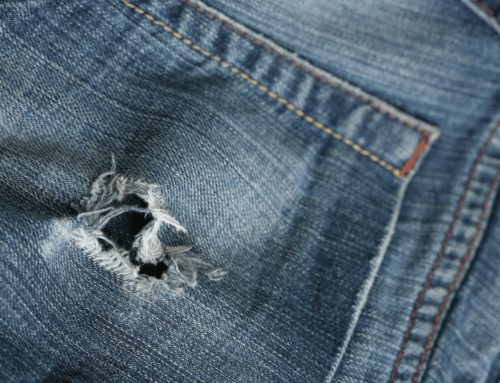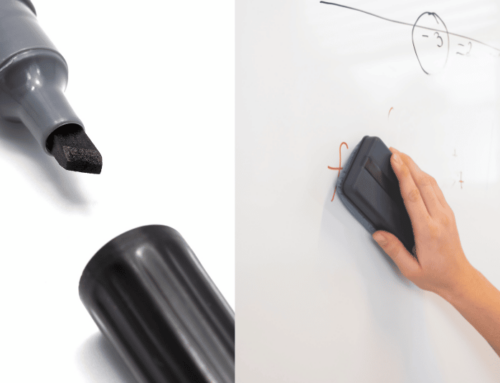How to Clean Acrylic Paint Brushes

In this article, we will explore the best methods for cleaning acrylic paint brushes. You will learn step-by-step instructions on how to effectively remove dried paint and keep your brushes in excellent condition. We will also discuss the importance of proper brush cleaning and maintenance to ensure their longevity. By the end of this article, you will have the knowledge and tools to keep your acrylic paint brushes clean and ready for your next masterpiece.
Acrylic paint brushes are an essential tool for any artist who works with acrylic paints. They allow for precise application and give artists the ability to create various textures and effects on their canvas. However, if left uncared for, acrylic paint brushes can become caked with dried paint, resulting in a less-than-optimal painting experience. Regularly cleaning your brushes is crucial in maintaining their quality and preventing the build-up of hardened paint. In this article, we will guide you through the step-by-step process of cleaning acrylic paint brushes to ensure they remain in top condition.
Importance of Cleaning Acrylic Paint Brushes
Maintaining the Quality of Brushes
Cleaning your acrylic paint brushes regularly ensures that they maintain their quality and effectiveness over time. Brushes that are not properly cleaned may develop a stiff and bristly texture, making it difficult to achieve smooth and precise strokes on the canvas. By taking the time to clean your brushes after each painting session, you can ensure that they remain in excellent condition, allowing you to continue creating your best work.
Preventing Hardened Paint Build-Up
One of the main reasons why cleaning acrylic paint brushes is crucial is to prevent the build-up of hardened paint. Acrylic paint has a tendency to dry quickly, especially when exposed to air. If left on your brushes without proper cleaning, the paint can harden and become difficult to remove. Not only does this make it challenging to achieve the desired brushwork, but it can also potentially ruin the bristles, rendering the brush unusable. Regular cleaning prevents the paint from hardening and ensures that your brushes stay soft and pliable.
Gather Necessary Materials
Before diving into the cleaning process, it is important to gather all the necessary materials. Here’s a list of items you will need:
Cleaning Solution or Mild Soap
You will need a cleaning solution or mild soap to help break down the paint and remove any residue from the brushes. Look for a gentle soap that is specifically designed for cleaning brushes or opt for a dedicated brush cleaner available at most art supply stores.
Warm Water
Warm water helps to dissolve the paint and makes it easier to remove from the bristles. Fill a container or basin with warm water before starting the cleaning process.
Brush Cleaner
If you have particularly stubborn or hardened paint on your brushes, a brush cleaner can be a helpful addition to your cleaning routine. Brush cleaners are specifically formulated to remove tough paint build-up from the bristles.
Paper Towels
Paper towels serve multiple purposes during the cleaning process. They can be used to wipe off excess paint, blot excess water, and reshape the brushes during the drying process. Have a stack of paper towels handy before you begin.
Removing Excess Paint
Before moving on to the cleaning process, it is essential to remove as much excess paint from the brushes as possible. This step helps prevent the paint from mixing with the cleaning solution and ensures a more effective cleaning process. Here are two methods for removing excess paint:
Wiping off Excess Paint with Paper Towels
Gently wipe the bristles against a stack of paper towels, squeezing out any excess paint. Continue wiping until the paper towels no longer pick up any paint. This method is particularly useful when working with brushes that still have wet paint on them.
Swirling Brushes in Water
For brushes with dried or partially dried paint, you can swirl them in a container of water. This helps to loosen the paint and make it easier to remove. Swirl the brushes in the water, occasionally pressing the bristles against the bottom of the container to further remove the paint. Repeat this process until most of the paint has been dislodged from the brushes.
Soaking Brushes in Cleaning Solution
Once you have removed the excess paint from your brushes, it’s time to soak them in a cleaning solution to further break down any remaining paint. Follow these steps:
Preparing the Cleaning Solution
Fill a container with warm water and add a small amount of your chosen cleaning solution or mild soap. Mix the solution gently until it is well-dissolved in the water. The warm water helps to activate the cleaning properties of the solution.
Submerging Brushes in Solution
Carefully place your brushes into the container, ensuring that the bristles are fully submerged in the cleaning solution. Allow the brushes to soak for approximately 10-15 minutes, or follow the instructions provided with your chosen cleaning solution.
Gentle Brush Cleaning
After the brushes have soaked in the cleaning solution, it’s time to gently clean the bristles to remove any remaining paint residue. Follow these steps:
Gently Massaging Bristles
Using your fingers, gently massage the bristles of each brush to further loosen any paint particles. Be careful not to apply too much pressure, as this could damage the bristles. Continue massaging until the bristles feel soft and flexible.
Using a Brush Cleaner or Mild Soap
For brushes with stubborn or hardened paint, apply a small amount of brush cleaner directly onto the bristles. Alternatively, you can use a small amount of mild soap. Use your fingers to work the cleaner or soap into the bristles, creating a lather. Continue massaging until the lather appears clean and free from paint.
Rinsing Brushes Thoroughly
After cleaning the bristles, it is essential to rinse the brushes thoroughly to remove any remaining cleaning solution, paint, or soap residue. Follow these steps:
Using Warm Water
Rinse the brushes under warm running water, ensuring that both the bristles and the ferrule (the metal part that connects the bristles to the handle) are thoroughly rinsed. Use your fingers to gently squeeze the bristles, guiding the water through the bristle tips to ensure a thorough rinse.
Until Water Runs Clear
Continue rinsing the brushes under warm water until the water runs clear, indicating that all the paint and cleaning solution has been removed. Take extra care to ensure that the ferrule is also clean, as any residue left behind can lead to paint buildup and damage the bristles over time.
Drying the Brushes
After rinsing, it’s important to dry the brushes properly to avoid any damage or misshaping of the bristles. Follow these steps:
Blotting Excess Water with Paper Towels
Gently squeeze the bristles with a paper towel to remove excess water. Be careful not to pull or twist the bristles too forcefully, as this can damage the shape and ruin the brush. Continue blotting until the bristles feel slightly damp but not excessively wet.
Reshaping Brushes
Reshape the bristles of your brushes to their original form. Use your fingers to gently reshape the bristles into a point or the desired shape. This step is particularly important for brushes with natural bristles, as they tend to lose their shape more easily.
Air Drying Brushes
Leave the brushes to air dry completely in a well-ventilated area. Lay them flat or place them upright in a container with the bristles facing up to ensure proper drying. Avoid leaving the brushes near a heat source, as excessive heat can damage the bristles or lead to warping of the handles.
Storing the Brushes
Properly storing your clean brushes helps maintain their shape and prolong their lifespan. Here are some tips for storing your acrylic paint brushes:
Placing Brushes Upright
Store your brushes upright with the bristles facing upward to prevent them from becoming misshapen or bent. This can be done by placing them in a jar or container with enough space to ensure the bristles are not touching each other or any other surfaces.
Protecting Brush Tips
To further protect the bristles, you can use a brush guard or wrap a small piece of paper towel or tissue around the bristle tips. This helps to maintain the shape and prevents damage when storing them with other brushes or art supplies.
Cleaning Hardened Brushes
Sometimes, despite our best efforts, brushes may become hardened with dried paint. However, don’t despair! With a little extra care and patience, you can still revive them. Follow these steps to clean hardened brushes:
Soaking Brushes in Brush Cleaner
Fill a container with brush cleaner and submerge the hardened brushes in the solution. Allow them to soak for an extended period. Some brush cleaners require overnight soaking, so be sure to read the instructions provided with your chosen cleaner.
Gentle Brush Strokes
After soaking, gently stroke the bristles against the bottom of the container or on a brush cleaning pad to remove the hardened paint. Be patient and avoid applying excessive force, as this can damage the bristles.
Rinsing and Drying Brushes
Rinse the brushes thoroughly under warm water to remove any remaining brush cleaner or paint residue. Follow the steps outlined in sections VI and VII to ensure a thorough rinse and proper drying of the brushes.
Can the Same Cleaning Method for Polyurethane Brushes also be used for Acrylic Paint Brushes?
Yes, the same cleaning polyurethane brush techniques can be used for acrylic paint brushes. Both types of brushes can be gently cleaned with mild soap and warm water. Avoid using harsh chemicals or excessive force which can damage the bristles. Allow the brushes to air dry completely before using them again.
Conclusion
Regular cleaning of your acrylic paint brushes is essential for maintaining their longevity and quality. Cleaning brushes after each use helps to remove excess paint, prevent hardened build-up, and ensure optimal performance. By following the step-by-step process outlined in this article, you can keep your brushes in top condition and continue creating your best work. So, make cleaning your acrylic paint brushes a regular part of your artistic routine and enjoy the benefits of pristine brushes for years to come.


